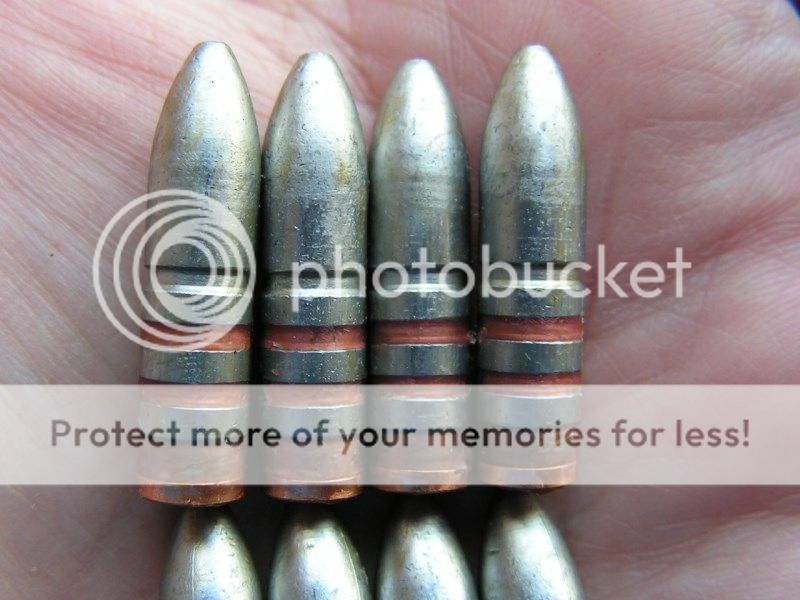Interesting read so far. Question #1 concerns the above-mentioned Ruger 77 chambered in 6.5 x 55--I have one of these, a Mark II in 77R form and unmodified. My understanding from an unrecalled published source is that their rifling is pitched at 1-9", but I haven't checked it first-hand. It LOVES any jacketed 140 grain bullet, stacks them right on top of one another--from Hornady #2630 through NosParts. It even runs the Barnes Condor Cuddlers at 1.25"-1.5" at 100 yards.
About 2 years ago I did a shoot-off with this rifle to gauge its preferences as to pourings. I borrowed moulds from my NCBS confederates, Lymans #266469 and #266673. I put all castings up in 92/6/2 alloy, both moulds cast at about .267" IIRC. This was fine, the Ruger has .264" grooves and not quite a .265" throat. Buckshot turned me a .265" H&I sizer, and I went to work building bullets and cartridges. I have yet to unearth the load records, but I cobbled up four powder types/weights calculated to deliver 1600-1700 fps. Bullets were seated to give a slight interference fit into the throat and without regard to magazine fit--this was a pure accuracy test. A month's worth of range time (4 visits) concluded that the Loverin design shot about 20% to 25% smaller groups overall than did the silhouette design. Upshot was that I bought a Lyman #266469 for this rifle, and it also drops at .267" in 92/6/2 alloy. Likely not good a for a lot of the Swede milsurps out there, and WAY too small for a now-departed M1903 Mannlicher-Schoenauer I once masochistically struggled with--but for the Ruger it works all right. Loverins are like Whelen's view of the 30-06......they are never a mistake. Mannlicher-Scoenauers are like dating cotillion debutantes--beautiful to look at and fun to play with, but impossible to please and have steak & lobster preferences. I speak from personal experience on both sides of that last analogy.



